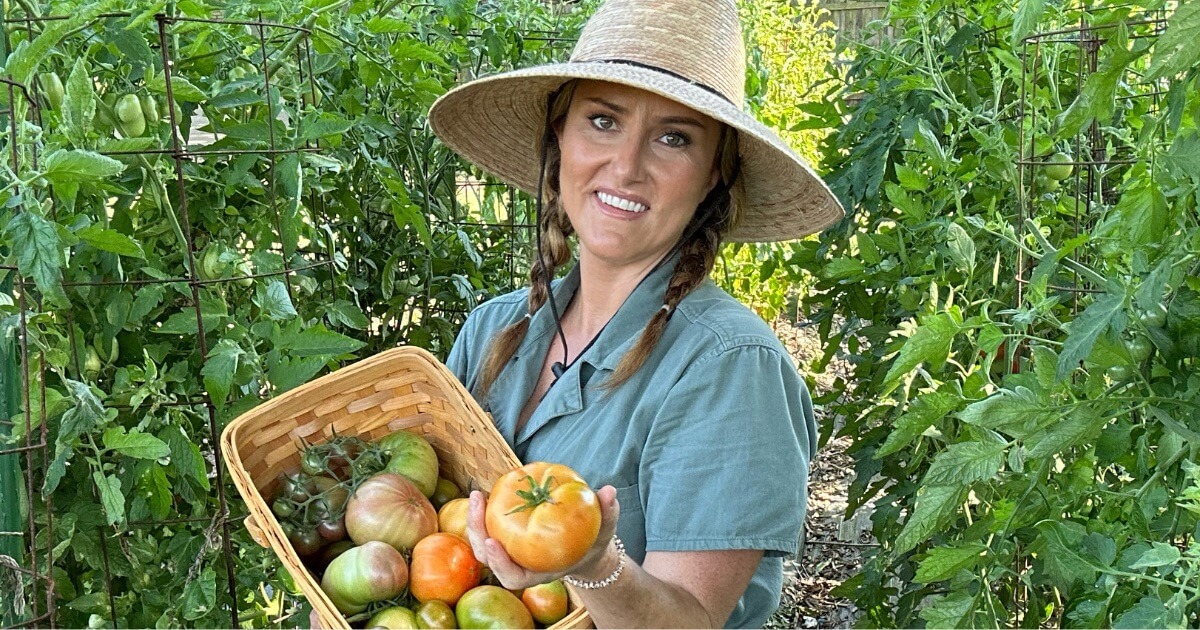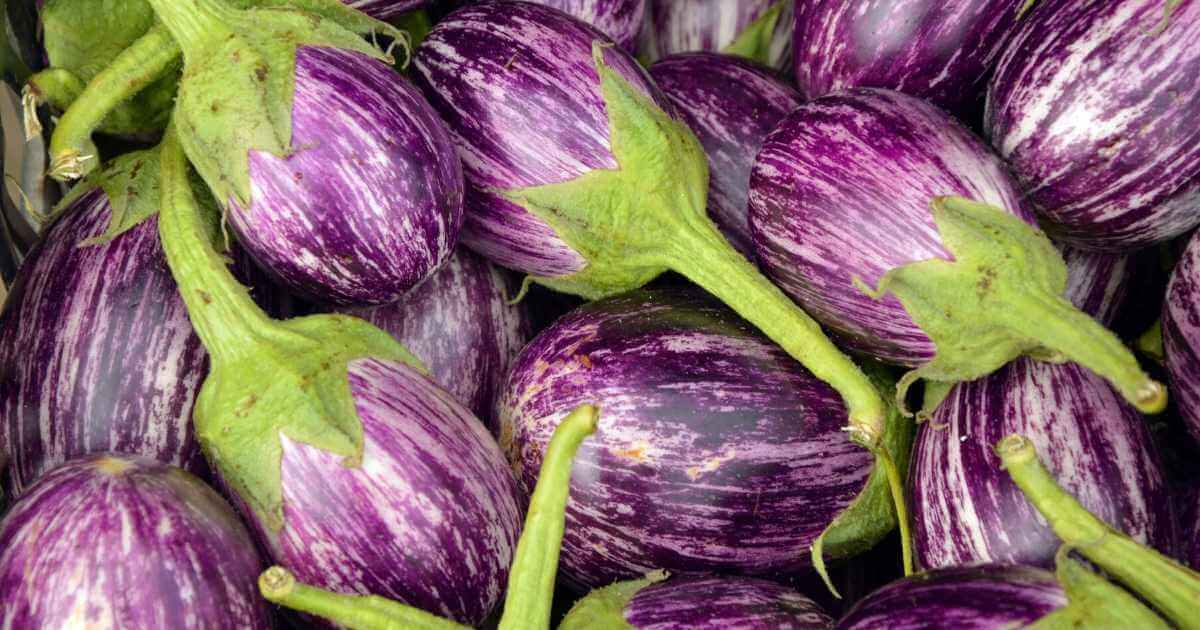
Season after season of trying and failing to grow eggplant in my Dallas garden left me wondering, “What am I doing wrong? What is the secret to successfully growing eggplant in North Texas?”
Everything changed for me thanks to two simple techniques.
Secret #1: Growing eggplant with weekly applications of diatomaceous earth
Have you ever noticed tiny holes start to appear on eggplant leaves in spring and early summer? Does it look like someone took the world’s tiniest shotgun to your eggplant? This is the destruction of the flea beetle. Flea beetles are so tiny that it’s hard to see them with the naked eye, but they look like tiny, jumping, black specks. And despite their size, they can easily destroy a plant in a matter of just a few weeks. This is why many gardeners never harvest a single eggplant.
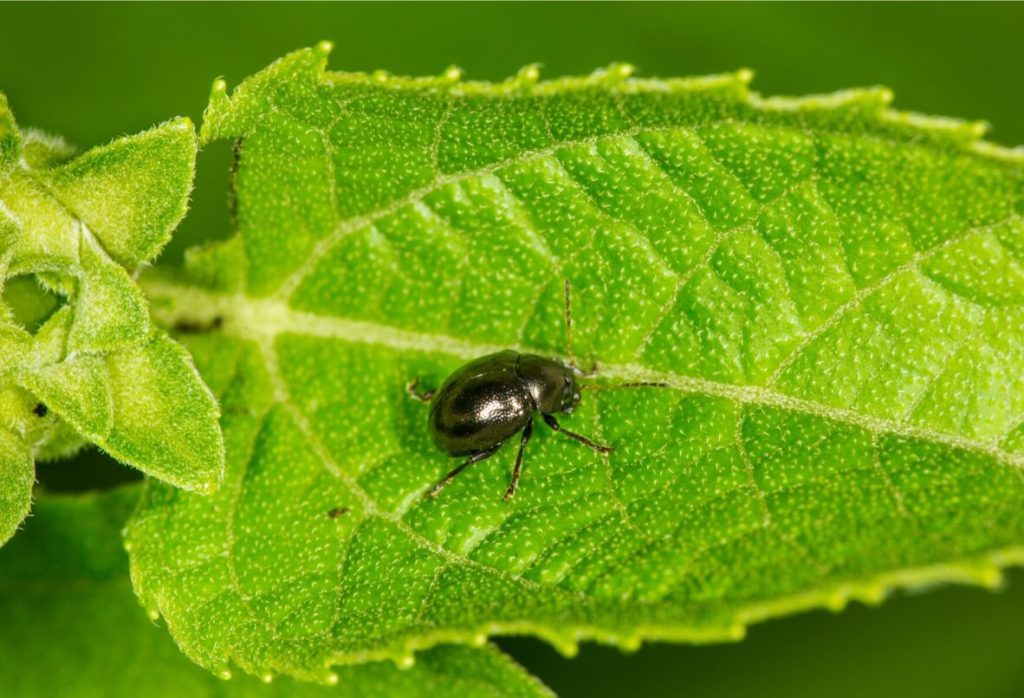
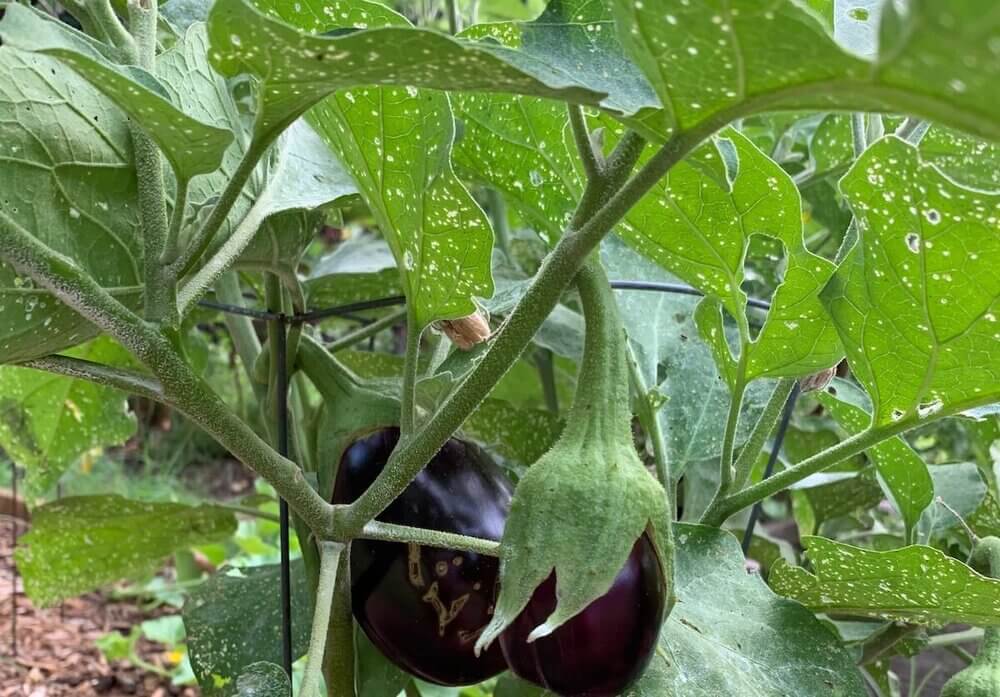
Once flea beetles start to attack your eggplant, it is nearly certain death for your plants unless you intervene. The secret is to protect your plants long enough for the flea beetles to move on mid-summer.
How do you stop flea beetles in their tracks? Diatomaceous Earth .
I have used Diatomaceous Earth for natural pest control in the garden for quite some time. It is OMRI listed for organic production, and easily found at any garden center. According to NPIC,
5lbs of 100% ground freshwater diatomaceous earth with absolutely no additives or fillers. Listed with the Organic Minerals Research Institute. Powder duster included.
How to Use Diatomaceous Earth
- Using an inexpensive powder duster, dust the entire plant with diatomaceous earth weekly, making sure to cover the undersides of the leaves, too. The duster takes a bit of practice, but just try and coat the plant with a light, even layer of powder. Re-apply if it rains.
- Repeat the weekly dusting until you notice the plant putting on new leaves that are staying free of beetle damage. For me, this started happening mid-summer.
- When shopping for
diatomaceous earth look for DE with the OMRI logo that is specifically made for insect control. Do not get the DE sold in the pool section of the garden center.
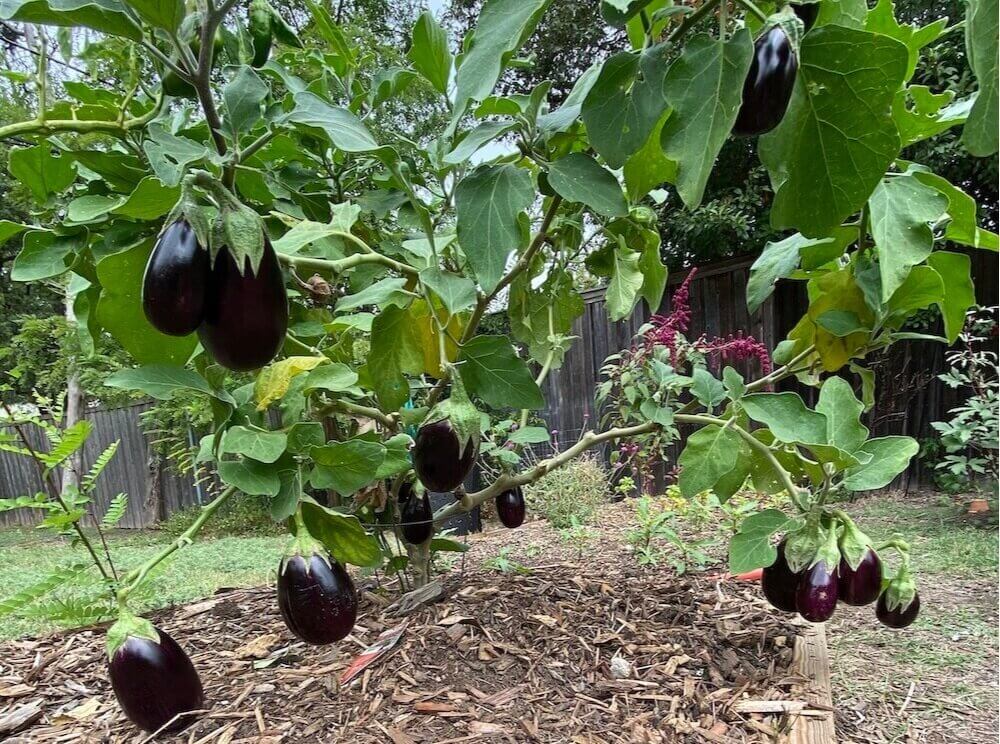
Secret #2: Growing eggplant with heavy applications of organic fertilizer
Eggplants are heavy feeders. This year, the more that I fertilized, the more eggplants my plants produced. They were particularly responsive to the occasional organic bloom-boosting
If you live in a cooler climate where frequent

With those two simple changes to my approach I was harvesting eggplant continuously through the summer up until the beginning of November. The plant just wouldn’t quit.
FAQ
Q: Why does my bag of DE say “not for use as an insecticide”?
A: I had the same question. Turns out this is has to do with labeling restrictions. DE is silica, and it’s not something that you want to inhale in large amounts. (Common sense.) NPIC has a good explanation: “When up to 2% is added to food,
Bottomline: just try not to inhale the stuff when you’re applying it. It never irritates me when I use it.
Q: Does DE harm beneficial insects like bees?
A: The jury is still out on this one. There’s a summary of the issue over at Planet Natural that is well-reasoned. When I apply DE, I do my best to keep it on the leaves and off of any blossoms. I feel comfortable using it based on my experience and knowing that the alternative organic insect treatments are MORE harmful to bees.
Summary
By staying on top of flea beetles and giving your plants the proper nutrition, growing eggplants in North Texas is easy, fun, and rewarding.
Time to start compiling eggplant recipes!
- Can Eating Tomatoes Help Prevent Weight Gain? New Study Says Yes - May 25, 2025
- New to Gardening? Join Our Step-by-Step Beginner Gardening Class - April 24, 2025
- Why “Intensive” Gardening is Not Good - March 9, 2025



